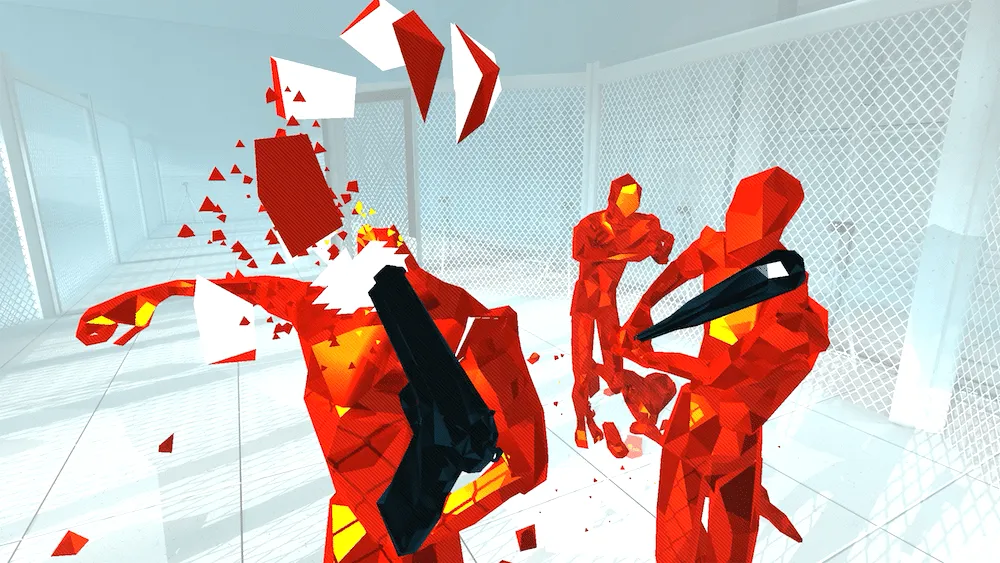We spoke with the developers of Superhot VR about porting the game to the Oculus Quest and opening up its potential to a platform without wires.
The game has changed: no longer do I have to stand there and wait for these crimson, crystalline enemies to come to me. I carefully walk using my actual legs right up to them and deck ‘em in their featureless faces. They shatter, and the screen fades to white and I find myself standing in the center of a new action scene.
“Superhot was built with mouse and keyboard in mind, but as soon as you’ve played it in VR, you instantly understood the next level of Superhot. And then you played it on Quest, things we didn’t design—it’s implicit in the game. You can hide under the table now. Or you can go around the corner,” Callum Underwood, producer of Superhot VR for Quest, says to UploadVR.
As many have already seen, Superhot VR (read our original Rift version review here) feels different on Oculus Quest. You are untethered, free to move through the balletic action game. The Superhot team worked a lot to make it happen—more on that shortly—but they are still working.
Just recently, a patch for the Quest version went live. Besides your typical bug-fixing, the patch added a new BIOS option screen to the game. It is accessible when you start up the game by holding the A and X buttons during the OS boot up. These screens allow you to modify the visuals a bit by dimming whites, to reduce the flickering at the edges that some people are sensitive to.
It also changes how the game behaves after you start it. The patch now allows three save files, giving players the ability to have different game states for different people. The team added this as they saw how the Quest version of Superhot VR was being played differently than past iterations.
“People are taking it to their friends and showing them Superhot. We added a Guest mode floppy, which you had to find. We expected people to Google it and find out how to do it,” Underwood says. “But now we added this fake BIOS setting screen, where you can choose which save file you are using, or launch directly into guest mode. Besides the bug we fixed, feedback was, ‘How do we make this better to show our friends?’ It’s nice to be one of those games that people want to show others.”
This new mode of play, bringing a VR headset to a friend’s house and showing it off, meant players wanted to show off the game from the beginning, not just jump them into the middle. And it wasn’t very intuitive how to do that originally. And once you did get friends inside, the Return pyramid that brought them back to the level select was present for these new players. It was confusing. That has been alleviated since players may now select a new save file and just start fresh.
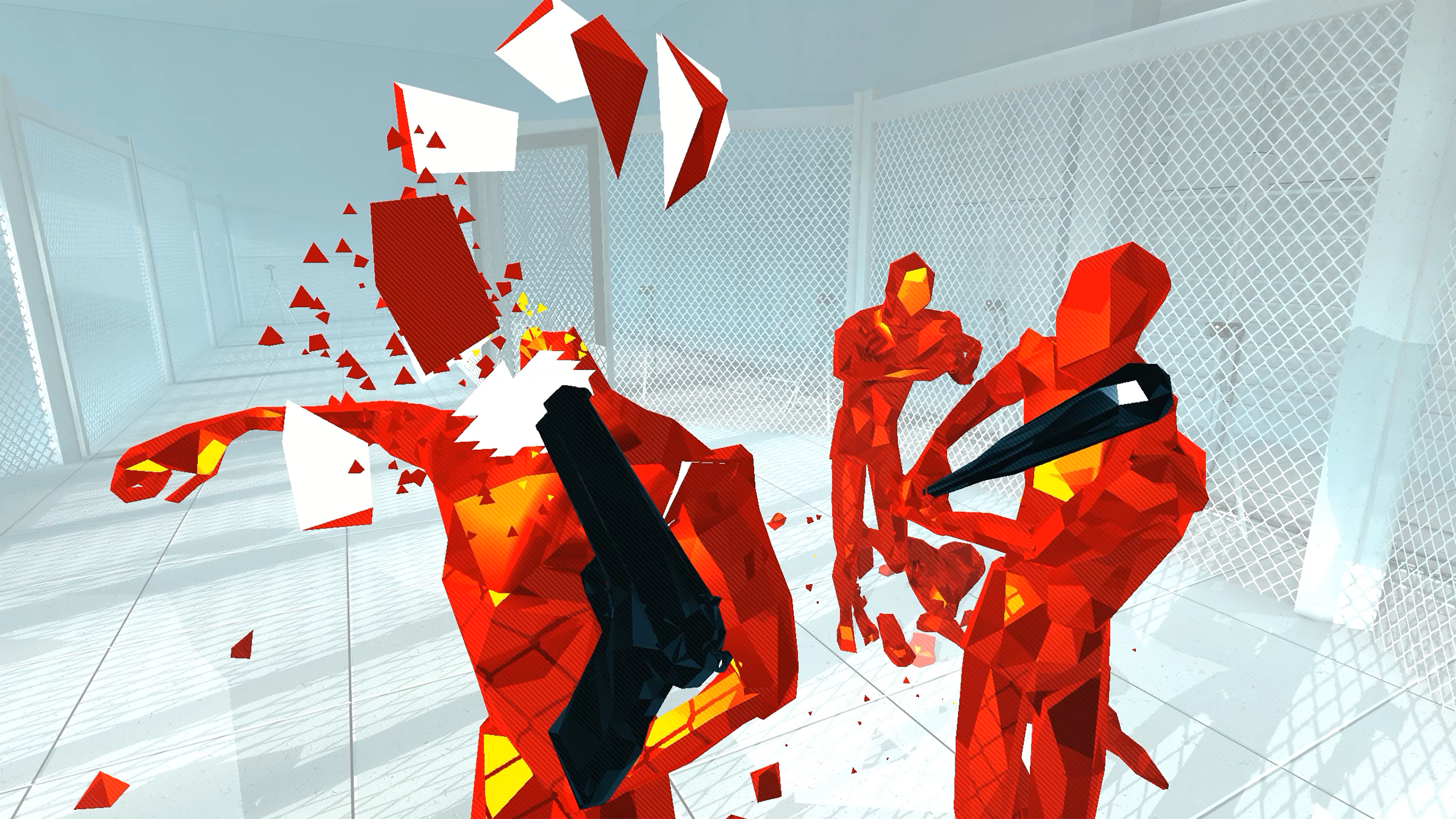
But as mentioned earlier, this patch is only the latest set of changes the team had to make to get it optimized for Quest. When they began the task of porting the game over to the standalone VR headset about a year before launch, they realized that they had to throw out most of the code.
“The codebase we were working on was old as f**k,” Underwood says. “There’s bits of code in there from 2014. There was a ramping up of getting people used to the codebase. And it was never built with a mobile platform in mind. The tethered versus tether-less stuff was not a challenge at all. The tech challenge came from the fact that it was a mobile chipset.”
The team had to rewrite 98% of the graphical shaders. They had to rewrite almost every part of the game itself: how the bullets worked, how collision worked, how the enemies were built, and how the enemies moved.
“You’re talking about something that is a couple of orders of magnitude less powerful. Even from going from PlayStation VR to Quest is a huge jump. It’s a huge drop in overall compute power and GPU power. You have to think about things differently. The whole way the hardware works is different. There are huge differences between mobile GPUs and desktop GPUs. We just couldn’t use the existing stuff. They were designed for a completely different architecture. It takes this complete shift in perspective,” says Luke Thompson, lead programmer on Superhot VR for Quest.
The elegance of the resulting game may be a testament to the focus of the team and what they do.
“For me, and the rest of the team, it was just a fantastic challenge. It’s really hard. You are going down 100 times in power, but you are doing it for something that is really cool. You can’t really rely on the way of thinking you had before, especially with this new hardware,” Thompson says. “You have to start with baby steps: is this going to work? Yes or no? Is this going to work? Well, kind of, but we are going to have to redo some of it. The whole thing becomes an entirely new code base.”
“The success of Superhot as a company, and as a product across all different platforms, is largely due to the perfectionist attitude people here have,” Underwood says. “There is a lot of fine tuning. No one in a million years is going to notice any difference, but they have to be just right. We spent a long time fine tuning the color of the bloom in the new BIOS.”
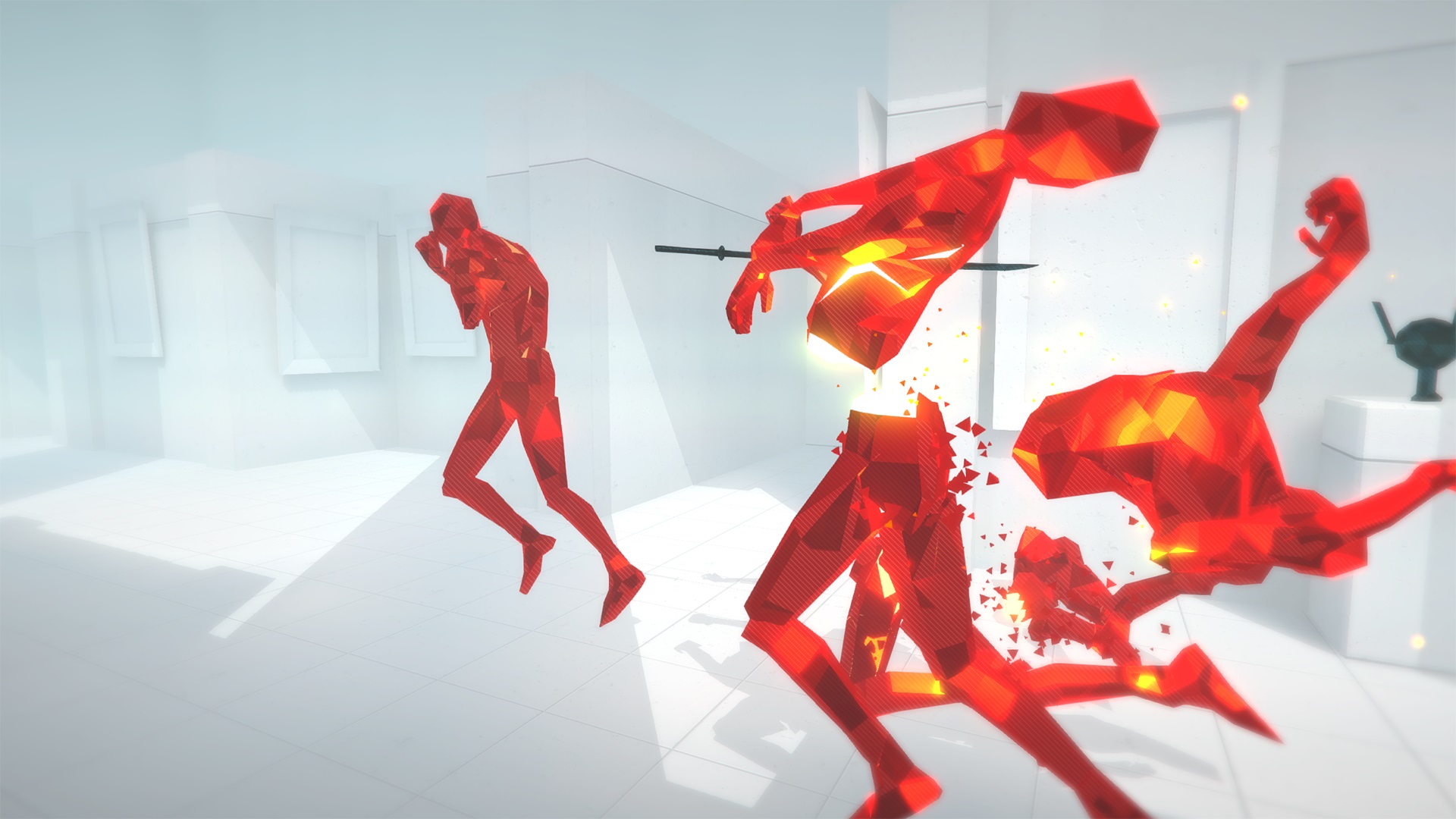
To make the Quest launch, the team had to work closely with all involved. Things like animation weren’t even finished until just before launch. That assistance for the game helped. Underwood pointed to the Oculus engineers listed in the credits.
“This was all with Oculus,” Thompson says. “All the things we end up hitting, they were like, ‘That’s a new thing for us. That’s a new bug or that’s a new optimization that we’ve not done before.’ We were finding out what their hardware was doing at the same time as them. Toward the end, we had Unity make a custom version of Unity for us to get around a particular bug. That would never happen under any other circumstances. Oculus talking to Unity. Unity talking to Oculus. We’re talking to them both. It was this whole interconnected spaghetti mess of everyone figuring out how this new hardware works.”
The team was keen on getting Superhot ready for the Quest launch because there is cache to being a launch title, with extra marketing help to go along with the technical assistance. Not to mention, all the attention.
“Everyone’s eyeballs are on you when they check out what’s on the store,” Underwood says. “It means the platform is going to care about the fact that you’re there on day one, not only in terms of marketing, but also helping you get to that. Being there day one came down to how do we reach as many people at once, but we know, that being a launch title means you get special attention.”
And the team added some important design changes to this version for Quest. When they had a demo at OC5 last year, when Quest was officially announced, there was a demo sequence where players actually walked down a corridor to their room in the game. When the next sequence would load up, the player would sometimes be facing a wall. The team realized they had to make a change.
In the old versions of Superhot, there were pyramids placed in the center of the play space that would put players back in the center where they need to be and facing the correct way to be right in the middle of the action for the next sequence. And considering these were headsets that worked with front-facing experiences directly before cameras or sensors, such as Oculus Rift and PlayStation VR, it was easy to calibrate the next level for players.
Not so with Quest. Walking and moving meant the old system would result in players looking at a wall. So they added two systems. The game automatically rotates to ensure that when the next scene begins, players are facing the correct way so they can just spring into action. The game also automatically centers the next level to where the player is standing, so they are in the correct place at the start—usually within grabbing distance of a weapon.
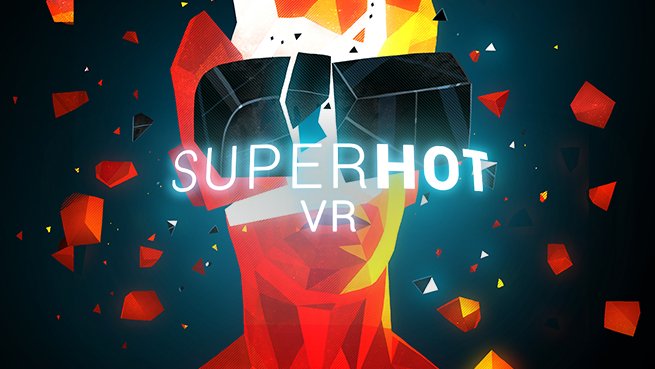
“The auto-rotation is because we don’t have a wire, we don’t have the constrained play space, we don’t have to care if the user is facing forward,” Thompson says. “So whatever way you are facing, the next level loads up facing you. We know where the center is because of this absolute positioning, because the Quest has mapped out the room you are in. So we didn’t really care if you were in the middle of the room or if you were facing the right way. It’s just a much more seamless experience.”
These changes made to the Quest version of Superhot VR, including the new BIOS, aren’t going to remain on just on Quest. The team has plans to move these quality of life improvements to other platforms. They also just pushed Valve Index and Knuckles support to the PC version of the game.
With Superhot now being played in a 360-degree space, will more games make that leap away from tethered VR design?
“I’m interested to see if VR games in general stop being front-facing. Out of the big 3 [VR platforms], 2 of them are front-facing. Vive is more 360 than others, but it still has a big-ass cable attached to it. So you still want some kind of grounding to the front. If it’s generally going to be 360, that might be interesting,” Underwood says. “I worry a little about that, because Superhot makes you feel like a superhero. Are you going to feel like a superhero if you have to move so much in real life and you’re spinning constantly around that you are basically doing the actions of the superhero? The game feeds you enemies in the way that you can do this ballet or dance. That’s going to be harder if you build the game from the ground up with 360.
“I’ve seen Beat Saber start to play around with 360, because there is already so much happening front on. Is it going to be improving the experience to be turning around? I genuinely don’t know. It might provide some more immersion, but that’s the last thing I’m thinking when I’m playing Beat Saber. I’m just trying to hit the box.”
So adapting Superhot even more to fit the large play area of Quest does not seem to be in the cards. But that doesn’t mean the team isn’t already working on the future.
“We would like to do—if you look at my tweets looking for developers, I’ve asked for people with experience with modding tools and level editors. I don’t want to talk too much about that, but we have plans that need people with that experience. And then, who knows about sequels? [Big smirk.] We can talk more about that when we know what’s happening,” Underwood says.
But any user-created options and/or sequel lies in the future, after the team has hired more Unity developers to support their next vision. They are focused on Quest right now. There will be another bug patch coming to Quest in a few weeks. For the team, support for the Quest platform has become integral to virtual reality.
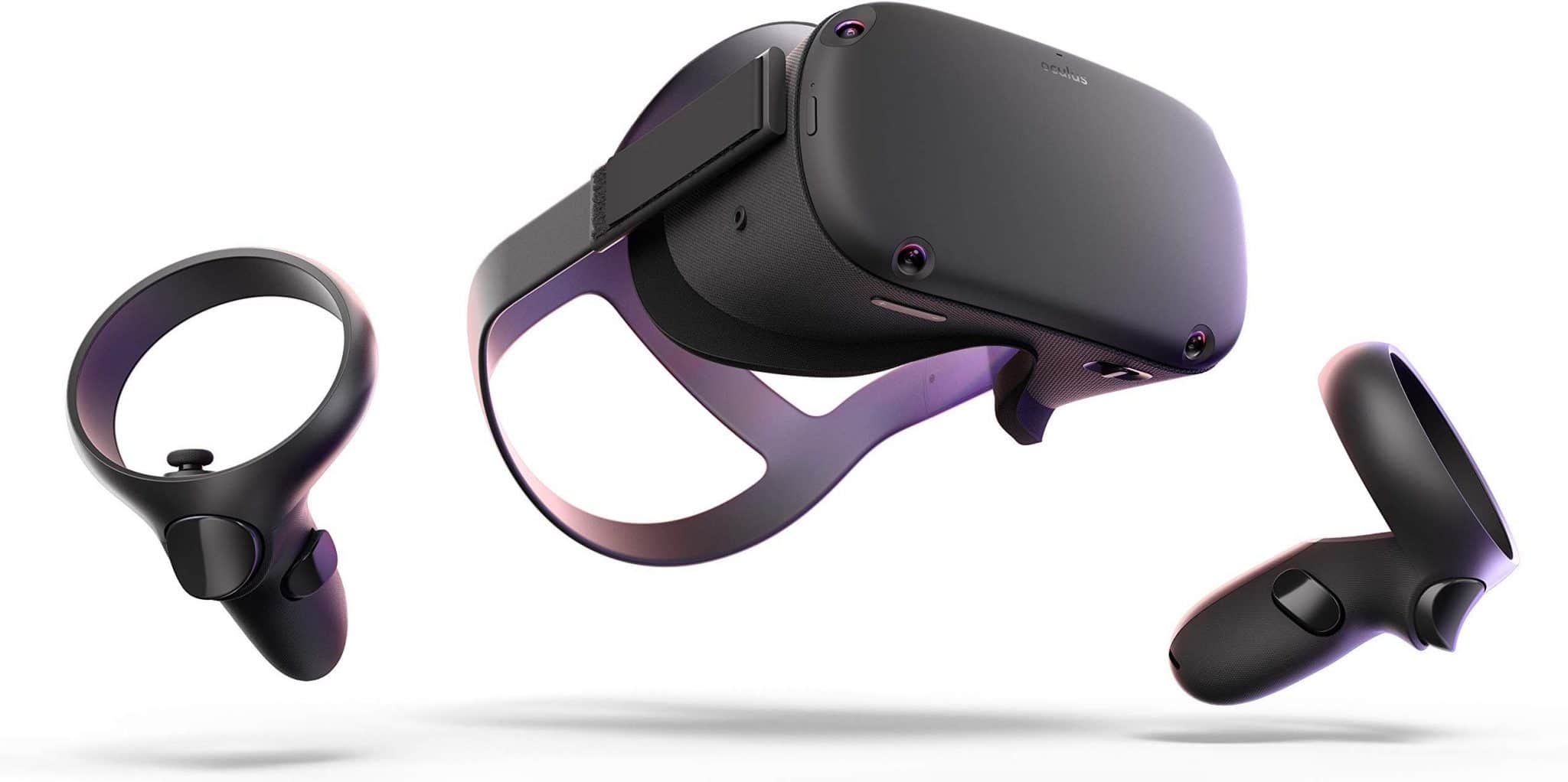
“The launch of quest has been the first time that I’ve seen Games Industry friends, who have been naysayers of VR, want to buy a Quest,” Underwood says. “People have been tired of VR evangelists saying, ‘VR is here and it’s amazing.’ Where actually, it’s been good, but it’s been happening in steps. I don’t think there’s been enough tempering of expectations. There’s more that we can do, but I feel like it is moving along.”
And the Quest’s portability and the practice of people lugging it to another’s house means more than convenience.
“Sharing is going to be really important to this ‘generation’ of VR, if that’s the right term,” Thompson says. “It’s the first era where Word of Mouth will be more important than inorganic marketing. Up until now, it’s really been enthusiast stuff. As for the mass market, it feels like you need to have that Word of Mouth to get beyond the enthusiast VR market. I think the Quest is fantastic for that. And I think that’s going to be really important, not just for the Quest, but for VR in general.”
For more on Superhot VR, make sure to read our review of the Oculus Quest version.

